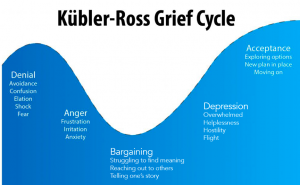All around the world, death is celebrated. Many cultures have different celebrations of death, or rituals, which highlight their focal points of social and cultural interaction.
“During the dying period or in anticipation of an expected death, all cultures, societies, and religions had-and continue to have- a range of rituals that allow those left alive to anticipate, adjust to, and in some ways honor the person who is dying and also afterwards when the death has occurred.”
(Michael Gordon, 2014).
Some celebrations are not somber events, but instead full of joy and laughter. Specific details on how the dead are honoured varies widely across the globe and originate as far back as 636 B.C.
Some of the most common celebrations of death includes Gai Jatra, Samhain, Pitru Paksha and the Hungry Ghost Festival.
Impact on Grieving
Rituals and norms vary across culture, gender, and familial construct. Rituals, or celebrations of death, are found to have a positive impact on the grief process of family and friends after a death (Norton & Gino, 2014). According to Norton & Gino (2014), the participation in symbolic rituals after a death will help specifically with the stages of depression and acceptance, as seen in Kübler-Ross’ Model of Grief.

The celebrations of death held by many cultures allows for their loss to be seen in a more positive light. Remembering their loved ones and celebrating them with food, music, parades, or offerings are common ways that allow individuals to create a symbolic sense of remembrance and letting go. Not only does this allow for those who have died to be remembered, but creates a chance for the living to feel a sense of unity and know they are not alone in their grief.
“These funeral ceremonies are a raucous affair, where commemorating someone who has died is not so much a private sadness, but a publicly shared transition.“
(Swazey, 2013)

Community dancing in Samhain 
Children joined in the cow procession
Celebrations of Death in North America
In the 21st century of North America, the most common way to celebrate death includes a funeral or wake service. This is a type of gathering that usually has no discrimination of who participates. This gathering may include pictures, music, wearing of dark colours, food and drink and the body of the deceased. Family of the deceased often share some words or memories with the audience about the deceased. This is a time for people to mourn and grieve their loved ones as they have passed. This service is optional, and often planned by the deceased before they die. Funerals often take place inside funeral homes, which are considered a service industry (Waugh, 2010).




